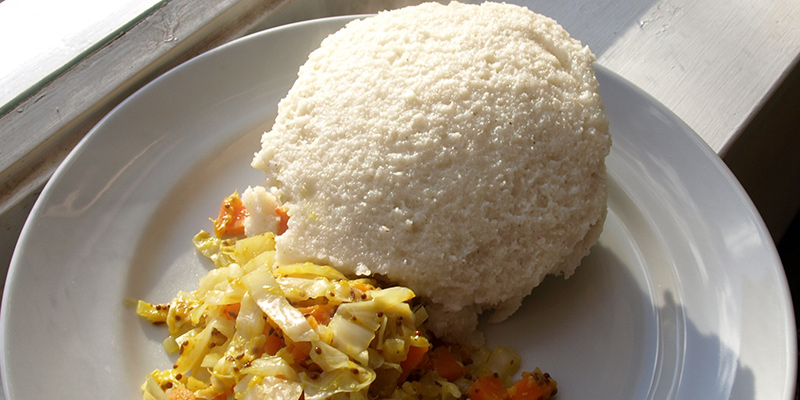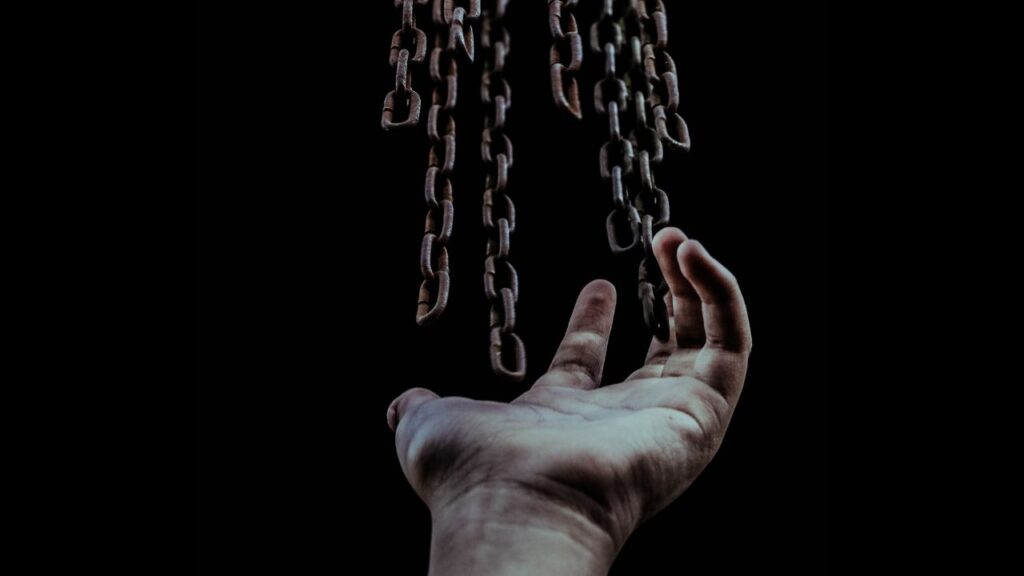A few weeks ago, a friend of mine randomly suggested something to me just after we’d passed a roadside grill on our way to Kawangware Market.
Tukule ulimi. Let’s eat tongue.
I obliged, both of us turning back to the spot where chunks of meat of different shapes and sizes were sizzling on an oily black grill, the tongue among them, sending smoke upwards, dripping juice. . . let me stop there. We ate the tongue and proceeded to the market. There we sat on a bench next to a chipo guy frying potato chips and crisps, his pan tilted at an angle to fit on the jiko. This we wanted a taste of. As we waited to be served, I suddenly became self-conscious.
“Do I eat too much?”
It’s well over a decade since my primary school peers and I walked to a neighbouring village to listen to the District Officer’s address on the occasion of a national holiday. The hot equatorial afternoon would present a challenge to the day’s main task – the D.O’s speech, and his token to students in the division. As we waited for the D.O. An elderly Luyia man stood up to address the crowd, proceeding to say something spiteful about my village. I remember the emotion in his words. It was strange. It felt like he had a problem with that part of the location I was from, or the fact that people from there were present. He said, “I do not like the name Nyang’ori, I do not like the name Nyang’ori because back when we were children the Luos used to refer to people from that side of our location as Jokuo Nyang’ori.”
At that time, I was still a pupil in primary school, in my final year. I had strong loyalties but could not do much to assert my position. So I kept my cool. Then recently, a song sneaked its way into my head and took me back to that time.
There’s a song that Luhya children sang to their mothers while skipping around the homestead in play. While their mothers prepared the fields in anticipation of the coming rains, they would sing:
Mama mbe zimbindi nzie kuminza
Nzie nzie nzie,
Nzie kuminza…
The first part of the song is sang to the mother asking for cowpeas to scatter in the field. The second part of the song goes:
Kiravura kitiezo, ngani inzara yakwita
Na nunyori kanyama, ushiezanga nogonga
Here, it seems to be the mother responding to the child saying, if it were not for kitiezo – a salient shrub that grows wild in the field – we would have died of hunger. The second line is a general observation that if one happened to find meat, they would grind on the millstone with joy.
In his book Western Kenya Historical Texts, Gideon S. Were explains that the name Nyang’ori, by which the Terik are known, dates to the severe famine of 1907 that led Teriks from the Nyang’ori area to steal cowpeas from the fields of the Joluo. As a result, the Joluo nicknamed them “stealers of cowpeas”, Nyang’ori.
Were notes that the traditions of the Terik confirm the fact that the name Nyang’ori was a nickname given to them by the Joluo due to the community’s habit of stealing their cowpeas. While still in primary school, my friends would always remind me that our village once went by a Terik name, Matrin. Nyang’ori seems to be a recent addition in the history of my village.
Now history confirms as factual the basis of that old man’s speech from my childhood. It gives space for whatever emotion he must have felt while expressing his feelings about my village – a century-old grudge. And a century might be a long time to still hold resentment over stolen food, but not long enough to completely erase the influence that the customs that defined relations in the time of our ancestors have on our present lives.
There is a stereotype that conflates the image of an absurdly full platter with most people’s thoughts about the Luyia community. For the longest time advertising, and more recently social media platforms, have reinforced this stereotype with performances of Luyias devouring huge amounts of food in one sitting. Without understanding that absurdity is one of the mechanisms that promote visibility on social media, one might easily be led to believe that a Luyia chewing a whole chapati in one mouthful on TikTok actually does that in real life. Or that a teenager decimating a kilogram of ugali on his own in front of a camera is a normal event in their homestead. Any Luyia with experience will tell you how that makes no economic sense in the village.
This is that part where you, the reader, struggle to detach this image from stories you’ve heard your Luyia friends tell about some of their interesting experiences back at home, upcountry.
A good number of Luyias really are guilty of contriving to always have the better share of certain meals. Luyia men in particular, have historically benefited from traditions that denied women the opportunity to fully enjoy chicken, as some parts were only served to the older male members of the household, the most infamous prohibition being that of emondo, the gizzard.
There is no concrete reason why the ban existed except that the emondo was meant for vasakuru, the elders only, as my aunt tells me. My efforts to reach an elder for an explanation about why the emondo was reserved solely for them were met with reticence. An online group that discusses a wide range of issues on the subject of Luyia culture and life—known on YouTube as the Luyia Fun Group—offers an interesting reason why women are prohibited from eating emondo in one of their videos. They claim that the emondo was found (by the elders) to bear a striking resemblance to a certain part of a woman’s body, and therefore rendered women unfit to eat it because of the homosexual imagery suggested. If there is any truth to this claim, and knowing our ancestors for who they were, the ban must have been a metaphor for their stand on a conversation many of them were obviously not ready to have.
Today, this metaphor has clearly been stripped of its latency. The stand it sought to soften remains in the community though, an oxymoron of the idea that queer manifestations of sexuality are imports of the western world to Africa. There’s still great denial of the existence of homosexuality in African communities, and where denial has failed cloak and dagger have been employed. Dissenting arguments usually range from homosexuality being against traditional African values, to it being unchristian, and most recently, a product of our continent’s interaction with Western culture on social media.
In my village, institutions dating back to the time before any contact was made with the Western world expose the contradiction in this dissent. During the time of my initiation into manhood under the Tiriki institution of idumi, manhood, one of the initiates in my rikura, age set, had long been known to have homosexual inclinations but faced no violence based on his nature during the whole period of seclusion. One would expect that such an institution rooted in African tradition would be extremely hostile in its attempts to correct the unmanly aspects of an initiate, in imparting its conception of manhood to a male member of the community.
In the mid-1920s, when the Quakers were establishing their mission station at Kaimosi, Luyia women in the larger Vihiga area were not allowed to eat eggs. This culture prevailed until the intervention of men who had just gained literacy from the mission set up by the Friends Quakers at Kaimosi. Yohana Amugune, who was among the first men to convert to Christianity at the Friends Kaimosi mission, went back to his village in Chavakali to spread the gospel. One of the reforms he sought to which he sought to apply his new knowledge and belief was the eggs issue. In his essay Yohana Amugune and the Maragoli published in the Biographical Essays on Imperialism and Collaboration in Colonial Kenya compiled by B.E Kipkorir, J.M. Mwenesi writes that upon returning from the mission in Kaimosi, Yohana Amugune broke the taboo and made no secret about letting his wife eat eggs, previously the preserve of men.
Christianity seems to have revolutionized food culture in Vihiga by pushing for the full inclusion of women at the dining table. On the other hand, it required them to forget crucial items on their menu, such as ugali (a stiff porridge) made from traditional grains.
Azangu, a historian I met at the National Archives while researching this story, had interesting thoughts about this matter. Azangu grew up around the Kaimosi mission in the ‘80s. The insights he shared with me suggest that the introduction of religion might have had a lot to do with the disappearance of certain foods and the adoption of others. Azangu told me how the Friends Quakers missionaries in Kaimosi grew maize to cater for their food needs, fostering the gradual shift from the traditional staples of sorghum and millet to maize among the new converts. One of the contributing factors to this shift was that maize was a bigger grain that was not as labour-intensive to cultivate and harvest as sorghum and millet. However, the biggest attraction came from the social benefits guaranteed by the shift rather than the economic incentives.
“During that time, the white ugali made from maize flour was associated with Christianity and modernity, this directly translated to higher status. . . The preparation of the brown ugali was pretty difficult, it required a higher level of skill to prepare compared to the white ugali.”
Azangu’s thoughts on Luyia food culture confirmed to me the idea that, perhaps what is viewed, and has been viewed for long time as an obsession with food, is rather a social structure that has embedded food security within its order – the order being efficient enough to sustain its people and itself, but also enough to be viewed as exploitative by outsiders who might not fully understand the culture.
In response to a question I had posed about whether Luyias really eat as much as the stereotypes suggest, Azangu said, “We do not eat that much, we just cook enough. And if you find yourself finishing all the food you’ve cooked, you are still not content.”
I find his remarks very comical but still legitimate. Food security has always been embedded in the social structure of the Luyia community. We have always had a culture of sharing food that bestows a feast-like quality on every meal prepared – we are not afraid of having guests join us at meals, we do not want to have to be awkward with those who find us mid-meal, and so we prepare even for those who are not present.
So, rather than being a love for food, for Luyias, it is a love of life; how could one separate the concept of life from food? That’s why Luyia funerals might be mistaken for feasts because they are actually a celebration of life. When the Keima drum is beaten, preceding the funeral procession, prompting the villagers to find their way to the home of the bereaved, it also asks them to fill their baskets with produce and carry them to the feast they are heading to. Most strangers cringe at the sight of villagers packed inside the homestead of the bereaved whenever a villager dies, being served mountains of ugali in plates on the verge of breaking from the weight of their contents. But a wise Luyia with an idea of what a functional Luyia society looks like or once looked like, appreciates the role of the dead to the living. They might validly argue that the departed is playing their last role on earth, giving life to not just one person, but to the whole community.
The departed deserve an opportunity to leave with a bang!
The song in my head is a song many Luyia children know. It is a song contemplating scarcity while it drips of joy. A song whose significance might be considered by many as just an historical record of emotion during a time of scarcity – a grave omission of an important message that the song seeks to relay to all children and adults with access to it: Prepare for better days, for worse times have existed, and always remember to be joyful.
Apart from the disappearance of the grinding stone and the loss of prestige of the white ugali, a lot has changed over the past century in Luyia food culture. From the emondo coming to resemble only itself – part of a chicken – to be eaten by women, to eggs becoming a normal thing for women to eat. The only constant has been rikuvi, the vegetable that grows when cowpea seeds are scattered in the fields. The cowpea seeds that the Nyang’ori people went down to Nyanza to steal more than a century ago, seeds that earned them their name.
Perhaps, the strange emotion that made the old man declare his dislike of the name Nyang’ori was due to his inability to reckon with the fact that time had erased its negative connotations but had left the name and its history intact.
This really is strange.
On our way back from Kawangware market, my friend and I happened to pass by the same spot where we had shared the tongue and overheard a woman asking those in her company, Tukule roho? Shall we eat heart?
We exchanged glances, smiled, our tacit agreement not after all exclusive to us, nor our secret cravings.
Everyone loves to eat, and to share food.
Luyias are no exception. We just eat.








